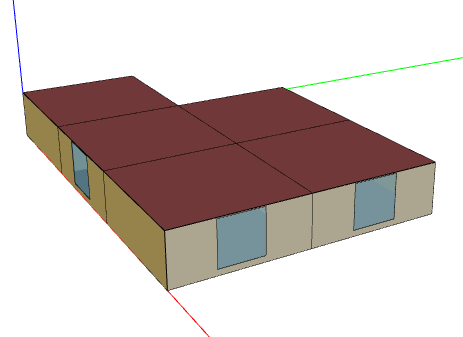Why is the sun position not translated into the solar heat gain in different facing rooms?
Hello. I'm using Energyplus 9.2 on a building model (located in NY) that has different windows facing all 4 directions. I have been trying to observe several parameters. The sunrise and sunset is at 60 degrees to 330 degrees (0 degree is at North). So,
- We should observe high solar gain on the south window all day long than the north window. But the obtained values suggest that only there is only 10% difference South>North. Shouldn't we expect more?
- The (total) solar radiation heat gain exactly follows the site radiation curve of the day, but shouldn't we expect more heat in the morning at East and at West in the afternoon? The values don't say so (east>west consistently by 8-15%.
List of Parameters I have tried:
- Surface Outside Face Incident Solar Radiation Rate per Area,hourly; !- Zone Average [W/m2]
- Surface Window Transmitted Solar Radiation Rate,hourly; !- Zone Average [W]
- Surface Inside Face System Radiation Heat Gain Rate per Area,hourly; !- Zone Average [W/m2] I evaluate them at each timestep, not hourly.
Link to the IDF: https://drive.google.com/file/d/11NUe...
I used Albany, NY weather file and referred to www.suncalc.org for sun position references. Thanks in advance.






@Fardin_in_E+ can you upload your input file to Dropbox, Google Drive, or something similar and share a URL? That would allow others to review your model inputs.
Sure. Please visit the Gdrive link for the IDF: https://drive.google.com/file/d/11NUe...
I used Albany, NY weather file and referred to www.suncalc.org for sun position references. Thanks.
As a quick question - I see you have the RunPeriod set to only a single day. If that day is very overcast it could potentially explain the results? Or is this lack of difference something you see throughout the whole year?
I have checked the solar radiation before choosing that day for the simulation. It is a typical bell-shaped curve.